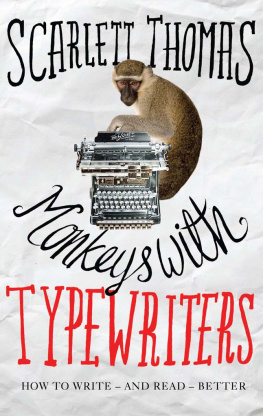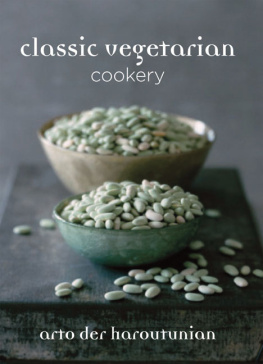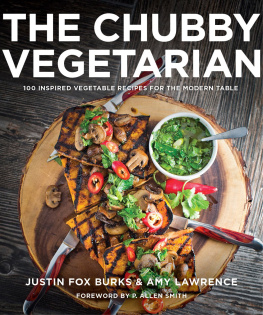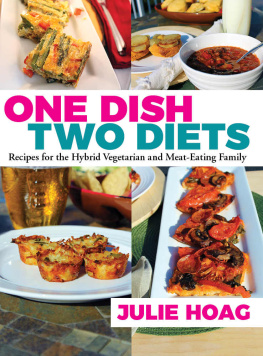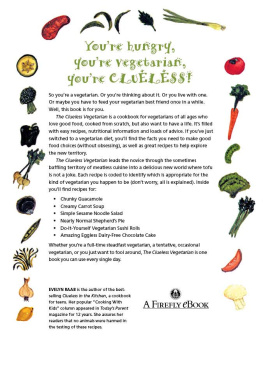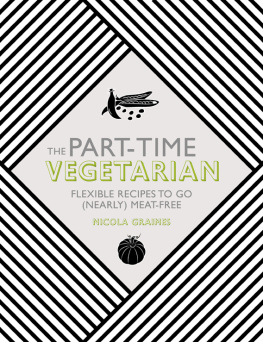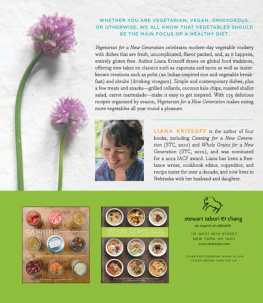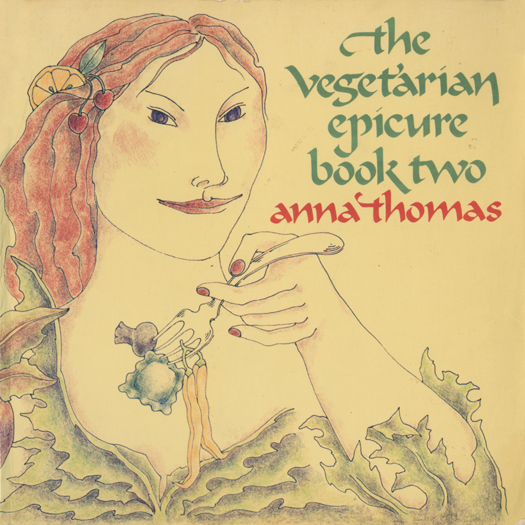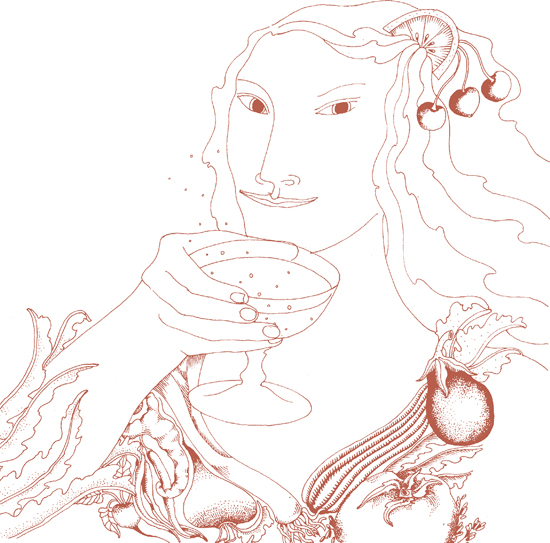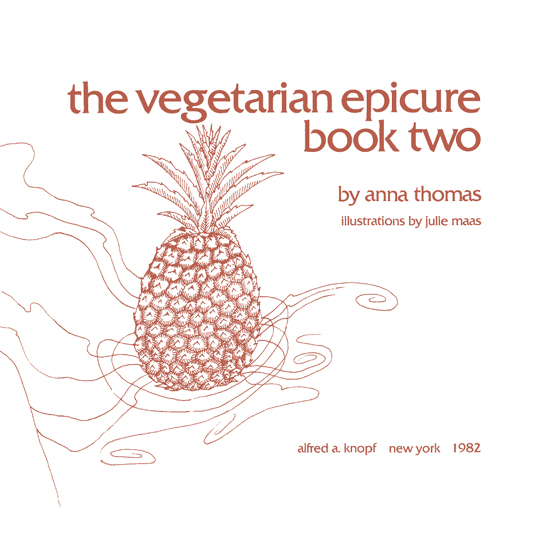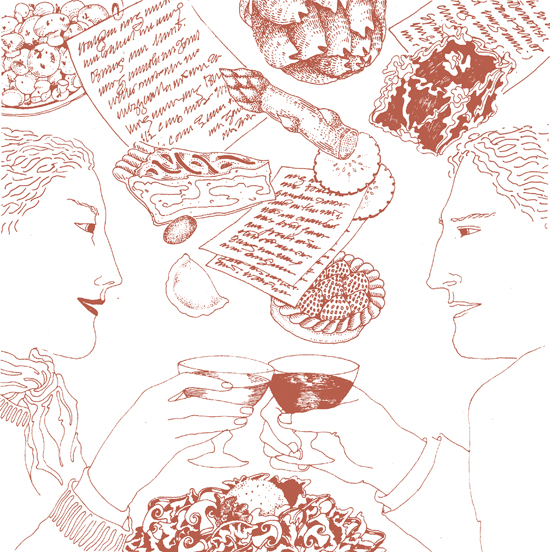Also by Anna Thomas
The Vegetarian Epicure (1972)
This is a Borzoi Book, published in New York by Alfred A. Knopf
FIRST VINTAGE EBOOKS EDITION, NOVEMBER 2013
Copyright 1978 by Anna Thomas
Illustrations 1978 by Julie Maas
All rights reserved. Published in the United States by Vintage Books, a division of Random House LLC, New York, and in Canada by Random House of Canada, Toronto, Penguin Random House Companies. Originally published in the United States by Alfred A. Knopf, a division of Random House LLC, New York, in 1978.
Vintage and colophon are registered trademarks of Random House LLC.
Trade Paperback ISBN: 978-0-8041-7055-0
eBook ISBN: 978-0-8041-5097-2
www.vintagebooks.com
For my husband, Greg
acknowledgments
I would like to gratefully acknowledge my friend Gail Hand, for her cheerful and efficient help in preparing countless recipes; Judith Jones, for all her clear-headed and tactful editing and advice; and Gregory Nava, for running to the store so many times.
contents
introduction
Why a second book? Because we always itch to expand horizons. Book Two is not just a continuation of the first volume but an exploration of rich new lodes. The first book came out of my own past, and from the tremendous need for a collection of really good vegetarian recipes. This second volume is the result of new adventures: It broadens the scope of the gourmet vegetarian kitchen with forays into entirely different cuisines and cultures. It is a record of culinary discoveries that Im eager to share, and a notebook of travels.
The writing of this book came about in a most enjoyable way. I spent the last four years traveling, eating, reading, taking notes, cooking, and writing. Work and whim took me through large parts of EuropePortugal, Spain, Italy, France, Greece, Austria, Hungary, Polandas well as to England, on a brief sally into the Middle East, and on a jaunt through Mexico. Everywhere I went, I was delighted by the food, by the rewards of being eager to sample the new and unfamiliar.
I thought of each meal as a little adventure (and some turned out to be big ones). When I was lucky enough to be staying with relatives or friends, I followed them into the kitchen and pestered them for their best recipes. If, while touring, I discovered a particularly wonderful restaurant, I didnt mind staying a day or two longer in that city to do it justice.
Many people, I found, were curious how a vegetarian could survive, and even eat splendidly, while traveling abroad. The answer is, easily.
Nearly everywhere I went, I discovered that the emphasis on meat was much less overwhelming than it is here in the United States, for economic reasons as well as from long-standing tradition. Most restaurant menus commonly include some enticing dishes made of fresh vegetables or fruits, eggs, cheeses, or grains. In all the tavernas, trattorias, kellars, cafs , and ristorantes I visited, the choices offered me ranged from adequate to exciting.
In Italy, of course, the antipasto and pasta were a constant temptation; in France we discovered omelets anew and ate dozens of cheeses that we had never tried before. In Madrid and Segovia, every restaurant offered an array of vegetable dishes, along with the eggy Spanish tortillas , which appeared in endless variation. And in England, that bastion of roast beef, the most sophisticated vegetarian cuisine was everywhere available, in a phenomenal number of Indian restaurants.
In Poland and Hungary we found marvelous fruit soups, pancakes in wonderful new roles, subtle and cooling salads made of cooked vegetables, and a whole repertoire of tasty ways with simple, fresh cheeses. I also recall evenings in Greece, sitting by the Aegean at sunset, munching grape leaves stuffed with rice and dill and washing them down with ouzo. And during the long, hot summer days in Cairo, when we werent devouring the sweet, juicy watermelons, we were sampling tahini and baba ghanouj and hotly spiced bean cakes.
The list goes on; really, the only problem was not to overdo the pleasures of the table so much that a new wardrobe would become necessary en route!
In hotel rooms and on long train rides, my husband and I would reminisce and fill notebooks with descriptions of wonderful dishes we had eaten, along with the new ideas that cropped up constantly alongside these discoveries. Dining cars were best for this. Rumbling past slowly changing landscapes and thousands of telegraph poles, we detailed the high points of a culinary odyssey.
Whenever we returned home, the serious cooking would shortly begin. Great eating became even better as favorite friends joined us at the table. I would experiment with re-creating memorable dishes from our travels and adapting foreign ideas to my own style.
Friends and family were often gathered in our little dining room, under the mirrored globe, to sample the new fare. I would gauge their responses, make more notes, and cook or bake things again if necessaryuntil it was all absolutely right.
Of course, not every recipe in this book is the fruit of travel. Often my friends share their particular specialties with me. Sometimes I feel the need of a little celebration, or I have a house guest to pamper, and then I like to devise something new, and usually write it down. But it is just a matter of doing something I enjoy, and thats just how I hope this book will be used by others.
In the course of all this testing and trying, my feelings about the main secret of good cooking were constantly reaffirmed. The one piece of advice I invariably repeat when people ask me how one should go about cooking well is this: Use good ingredients. Always, always start with the best possible ingredientsthe freshest butter and milk and cream, the nicest vegetables, the finest pasta, the loveliest rice, vine- or tree-ripened fruit, aged cheeses, good wines. You wont be sorry. With high quality at the outset, you have a fair chance of achieving superior results. Yes, its possible to destroy even the best ingredients if you dont know what youre doing, but at least you can be confident that they wont destroy you! So procure the best you can, dont be shy in the kitchen, and good things will follow.
As in the first Vegetarian Epicure , the good things in this book are meatless, but it is not a book for vegetarians only. It is for anyone who can enjoy foods like fettucine alfredo, pea soup with dumplings, fondue, pimiento and olive quiche, tomatoes filled with hearts of palm, Liptauer cheese, wild mushroom souffl, Caesar salad, and frozen strawberry mousse. It is true, however, that a great many people today are eating less meat, for reasons of health, economy, or simply personal preference, and I am convinced that these new styles in dining, far from being dreary, can be infinitely varied and inspired. For those who want to expand their repertoire because they are eating less meat than they used to, and for those who, like myself, prefer not to eat meat at all but dont intend to compromise on the satisfactions of really delicious food, I hope this book provides a bonanza of pleasureable eating.


